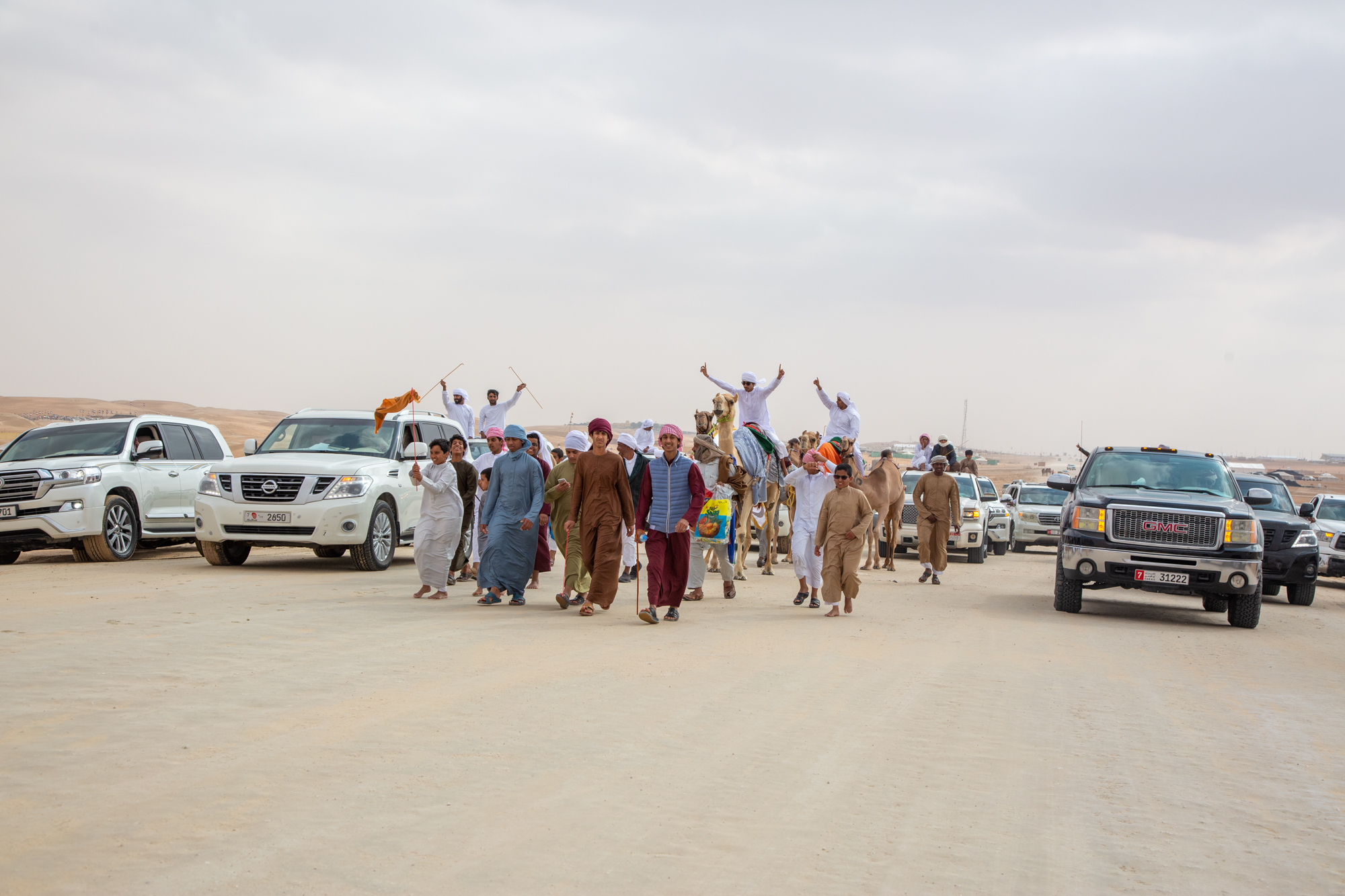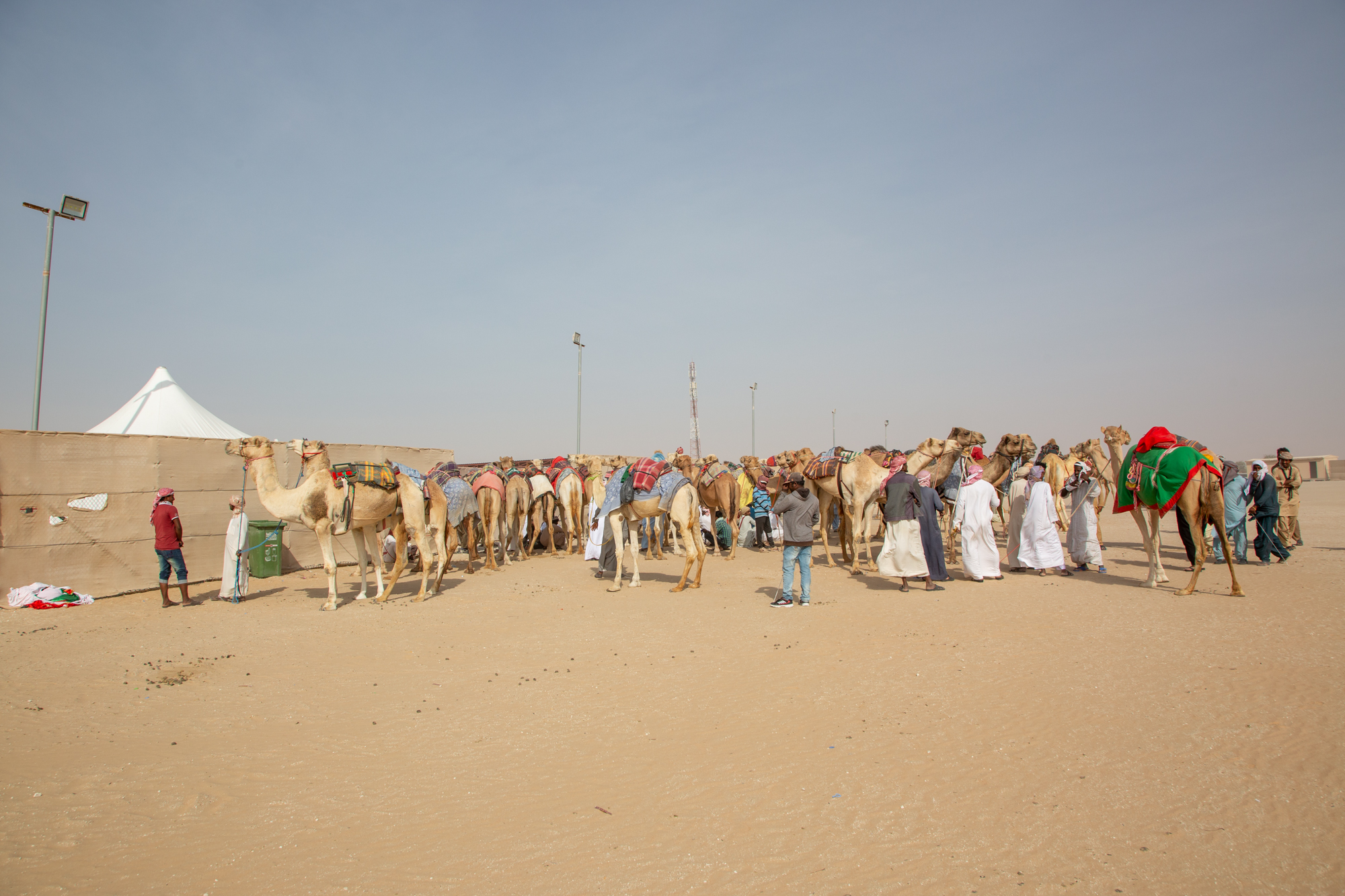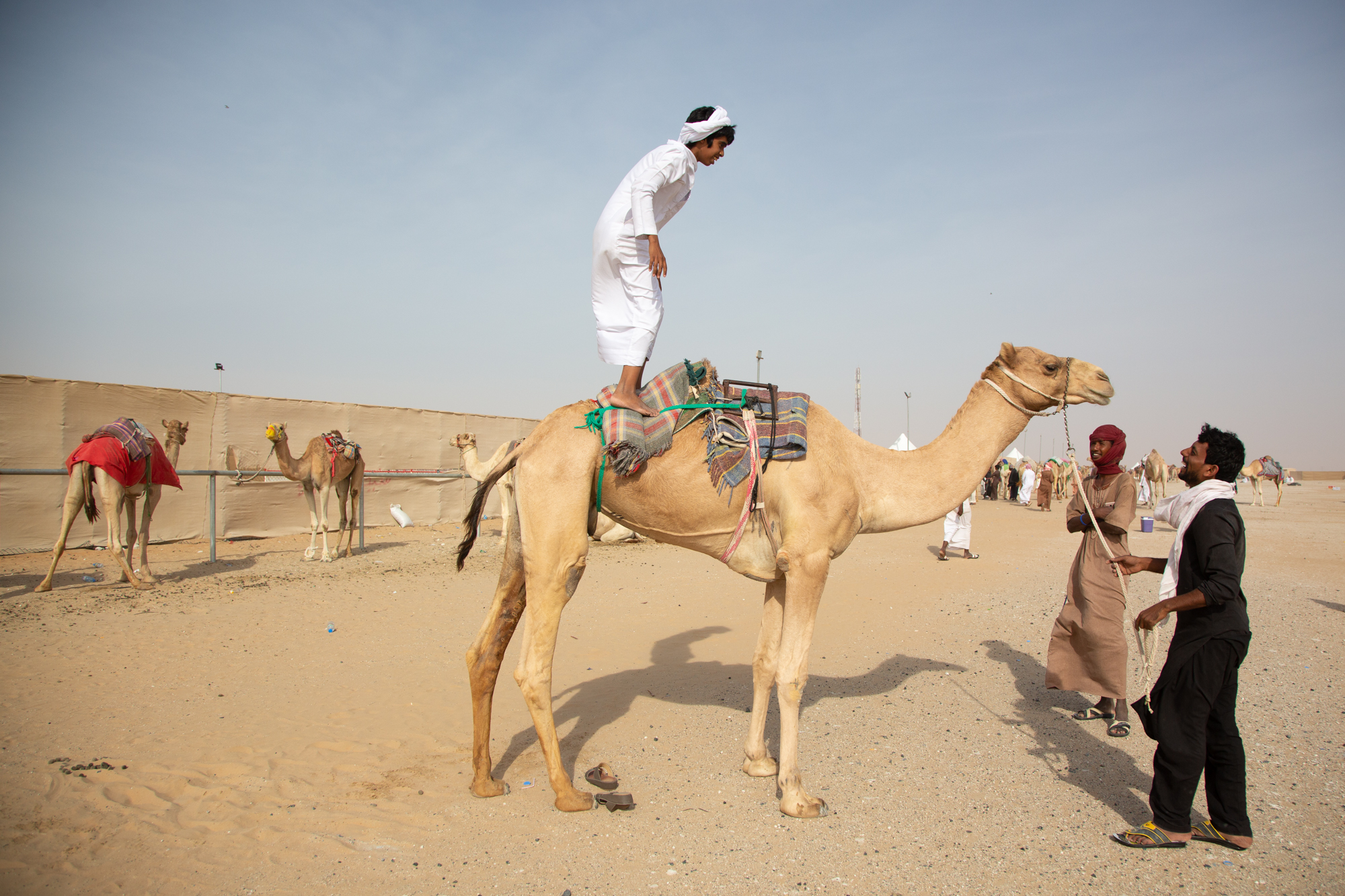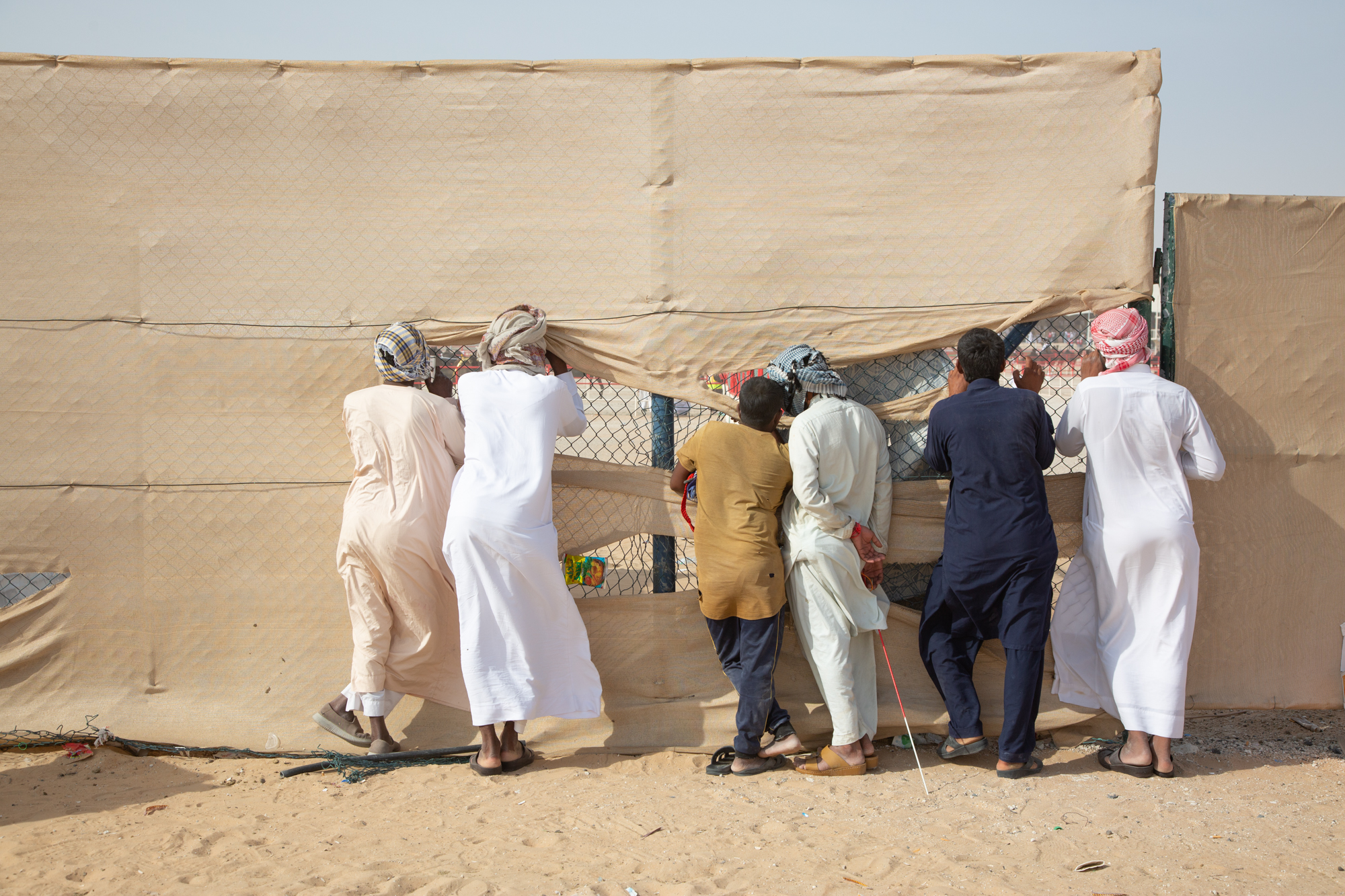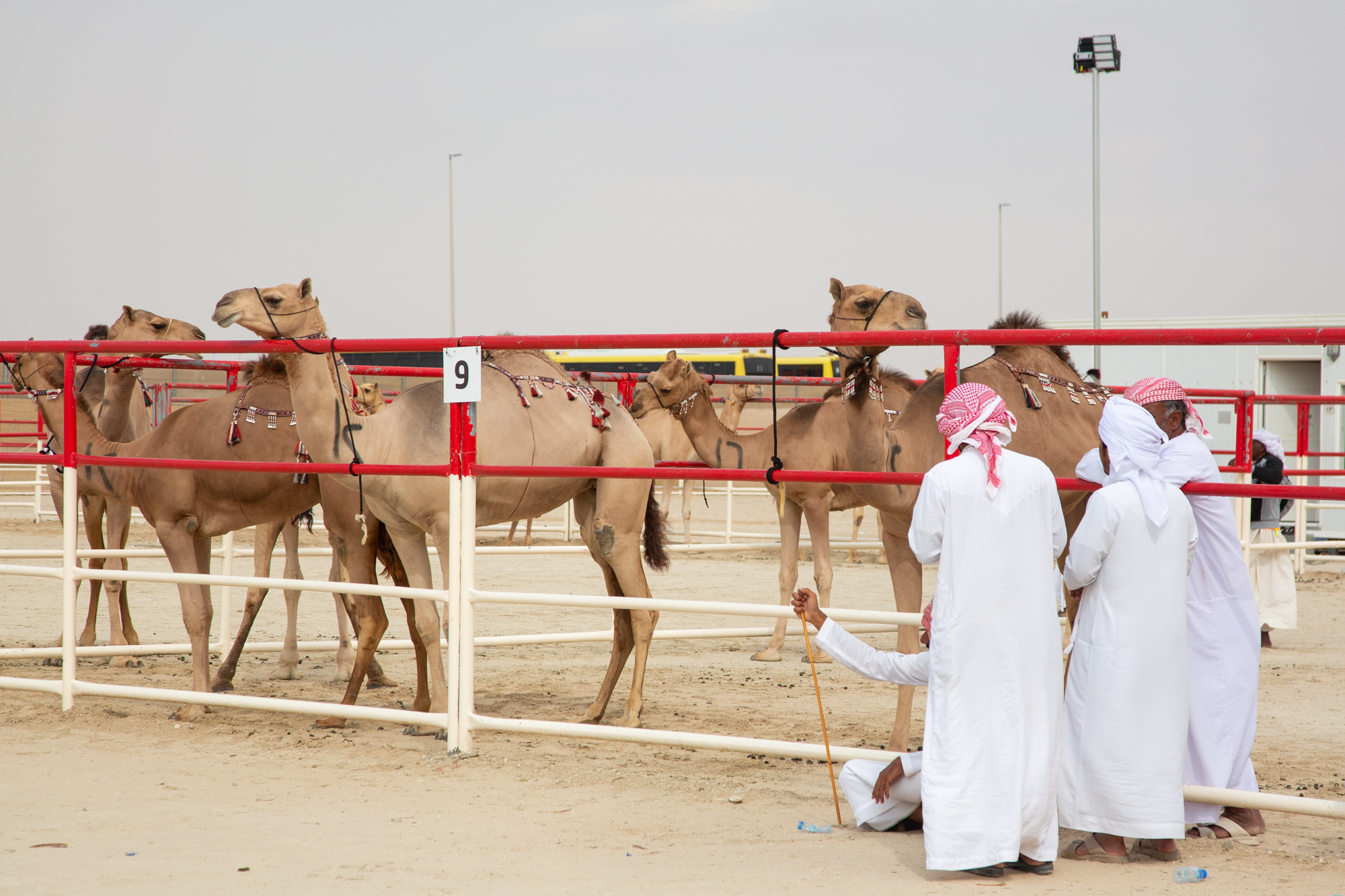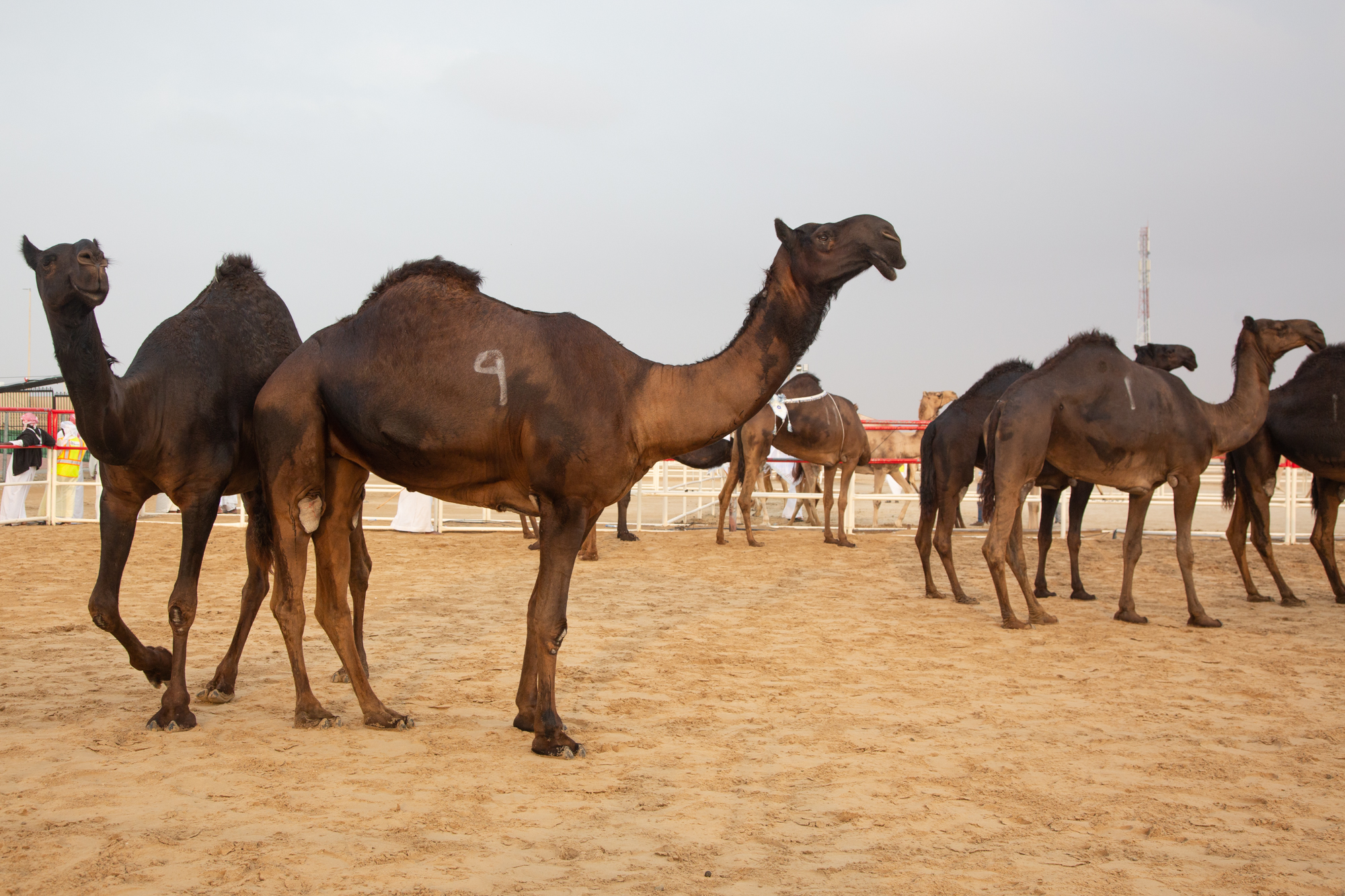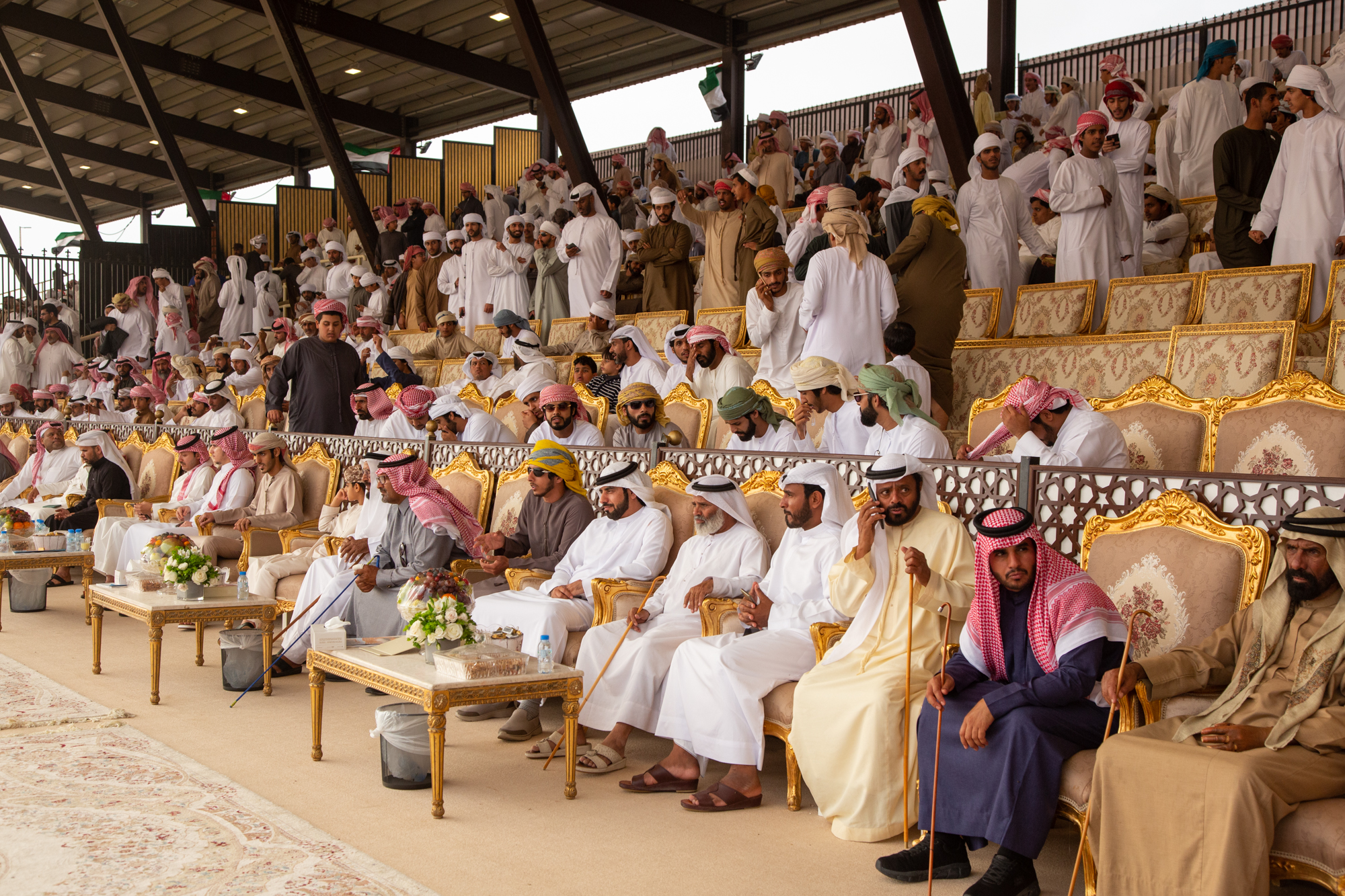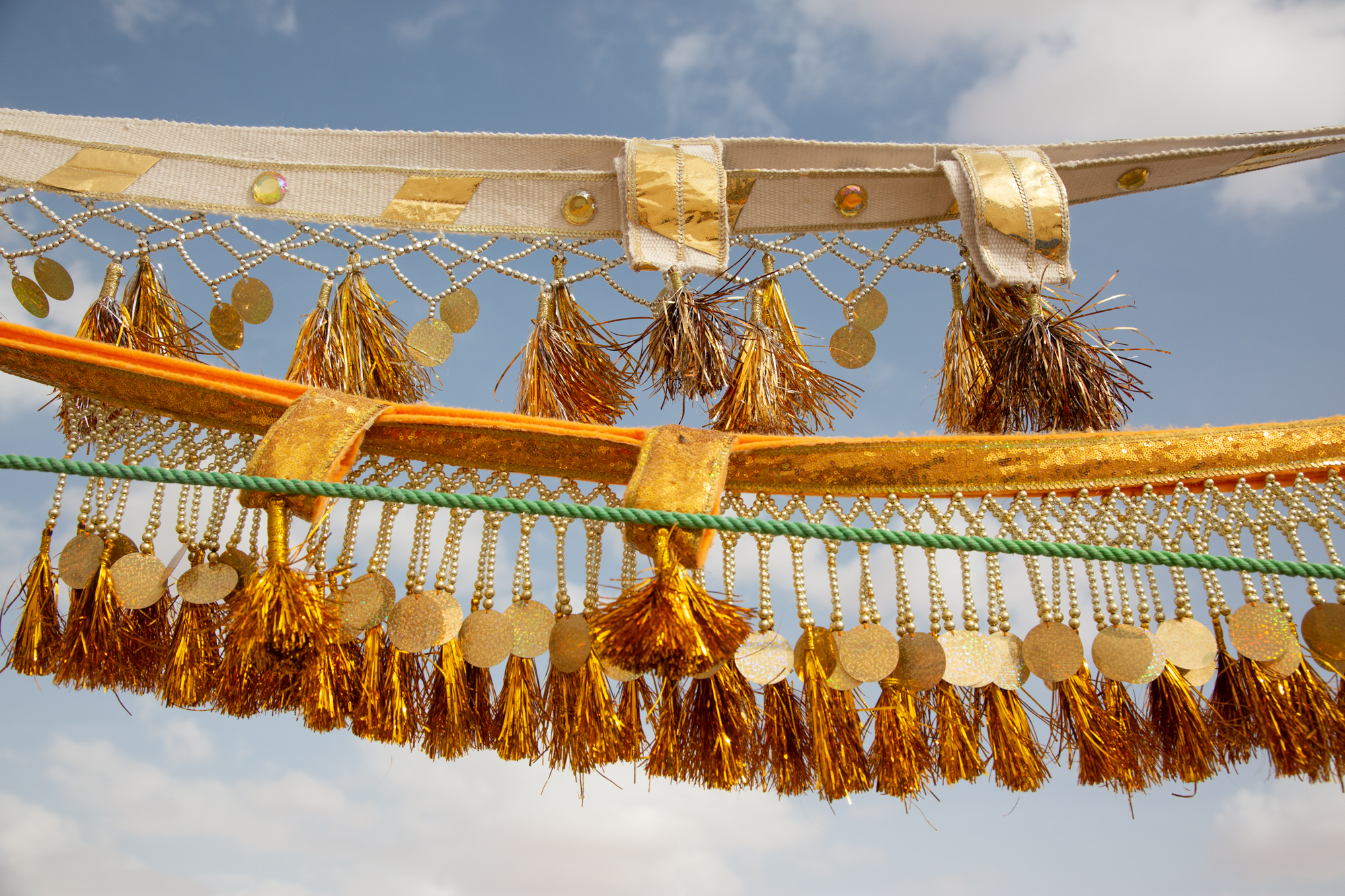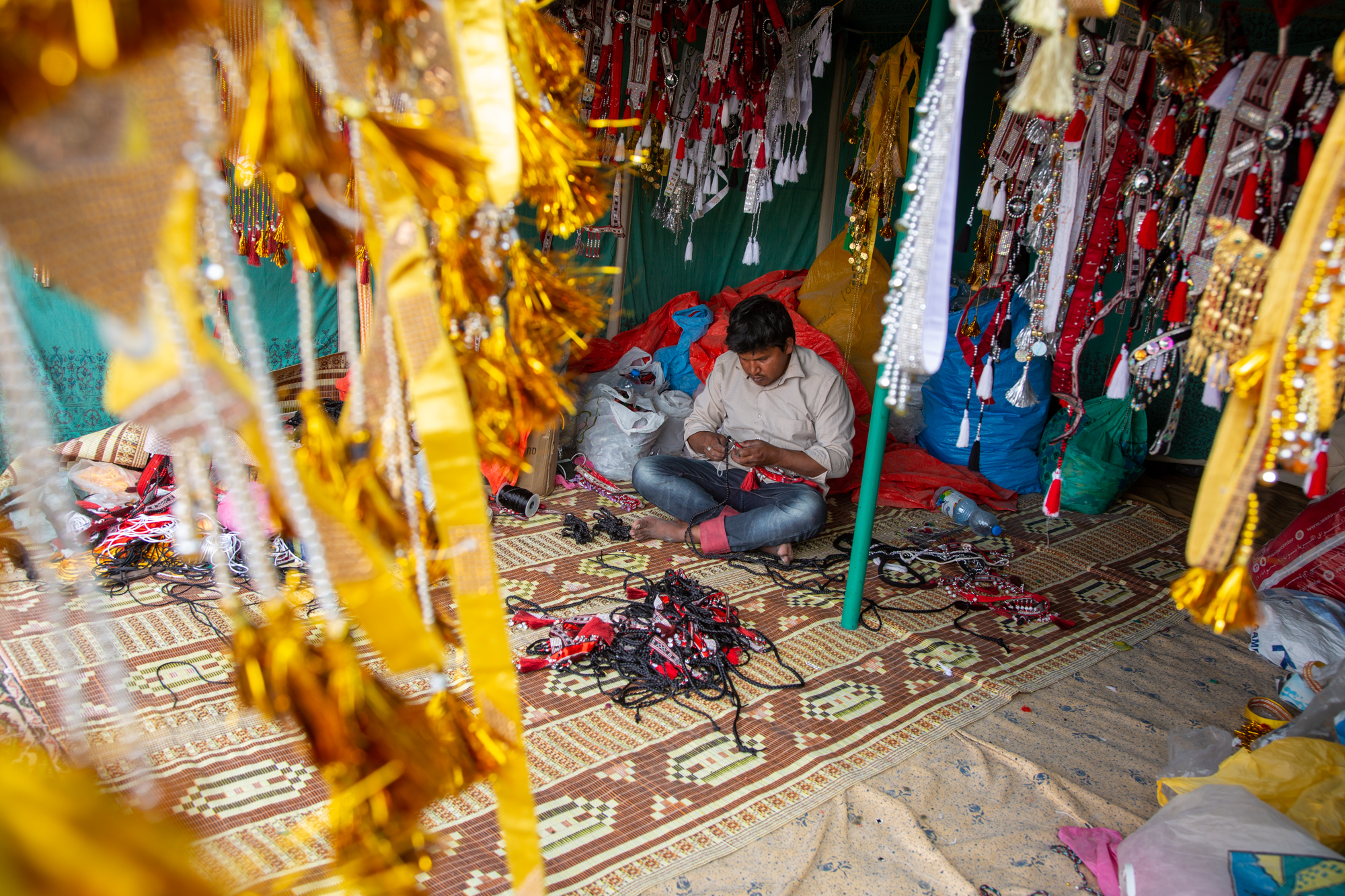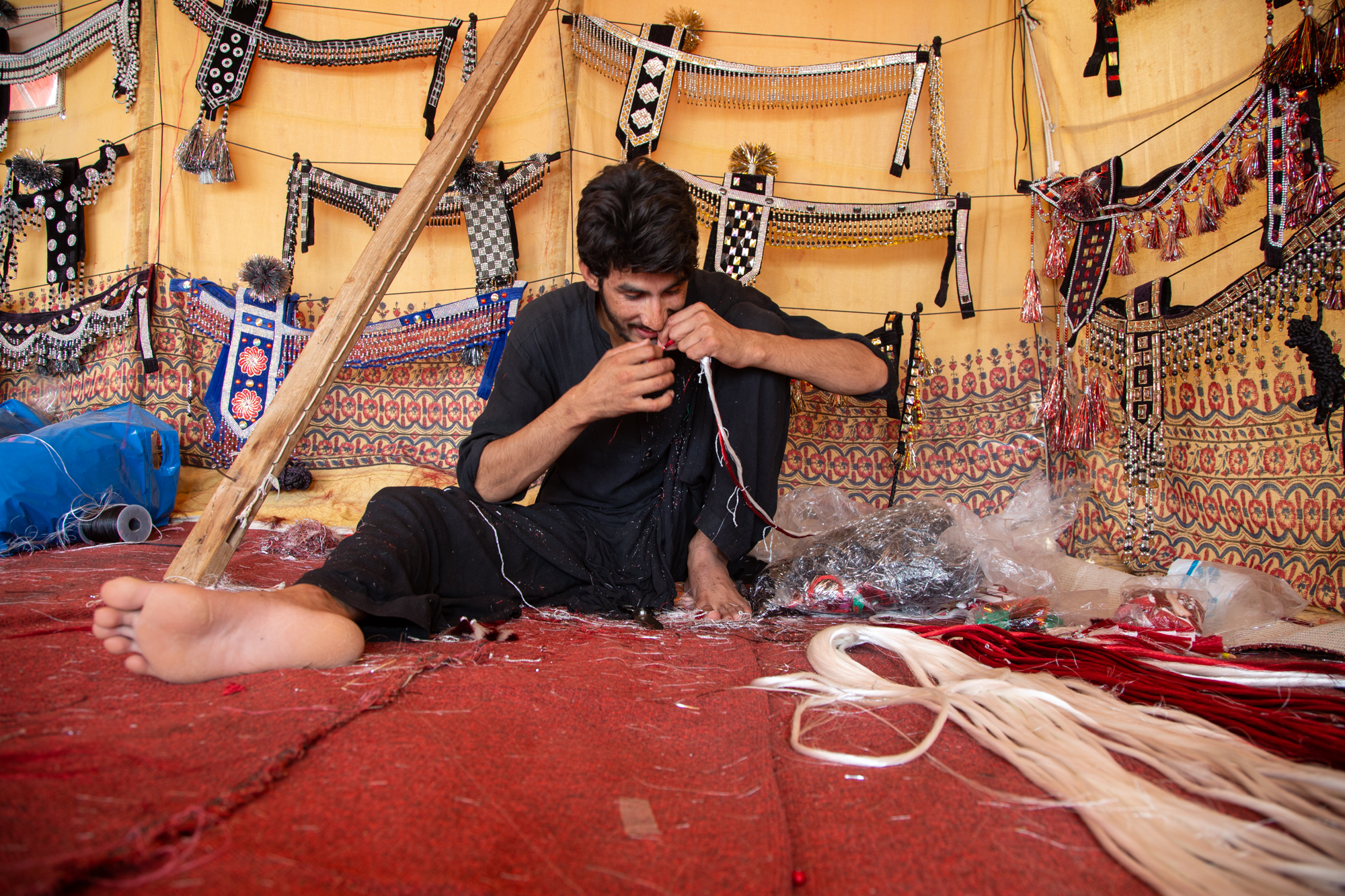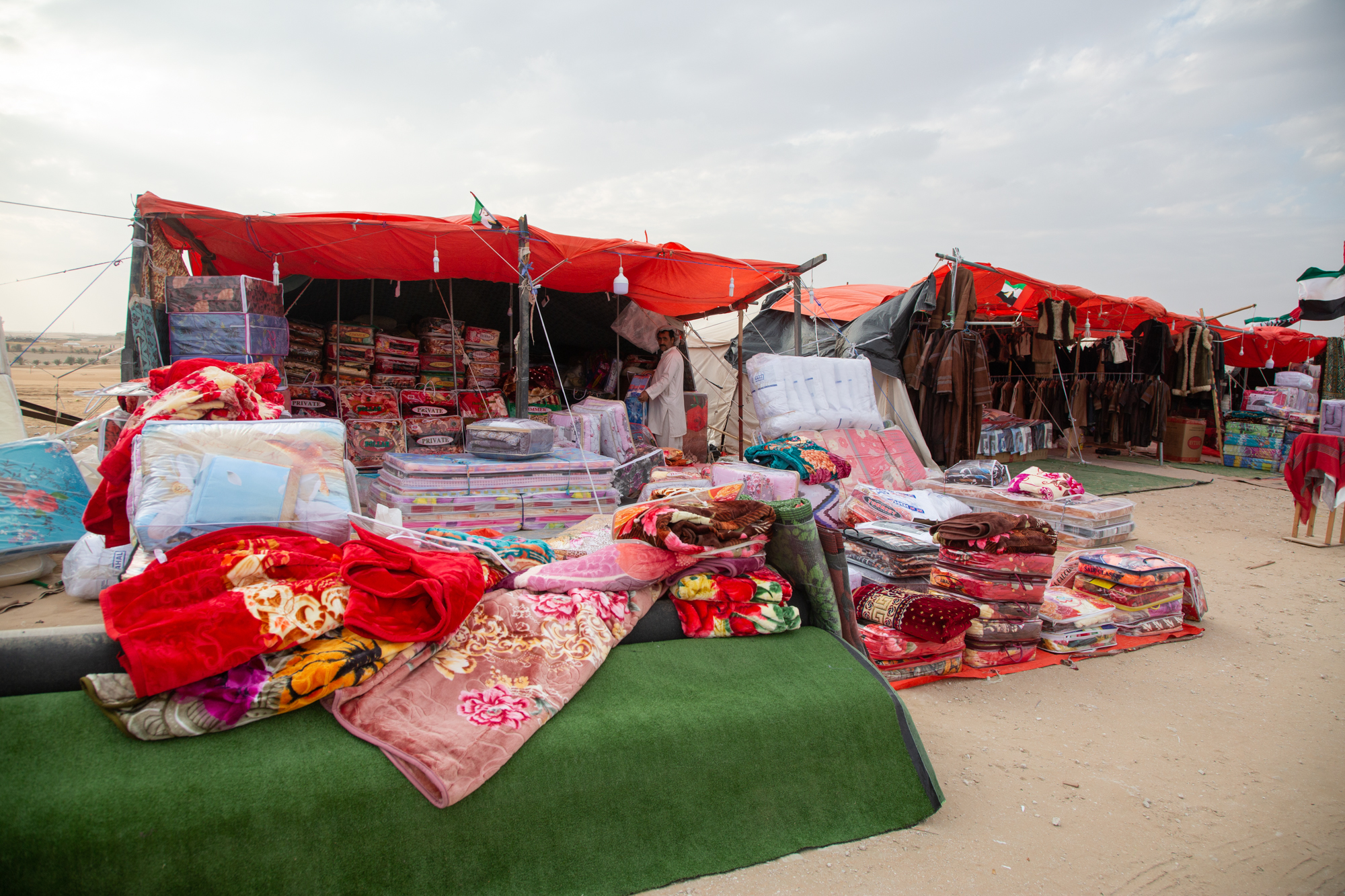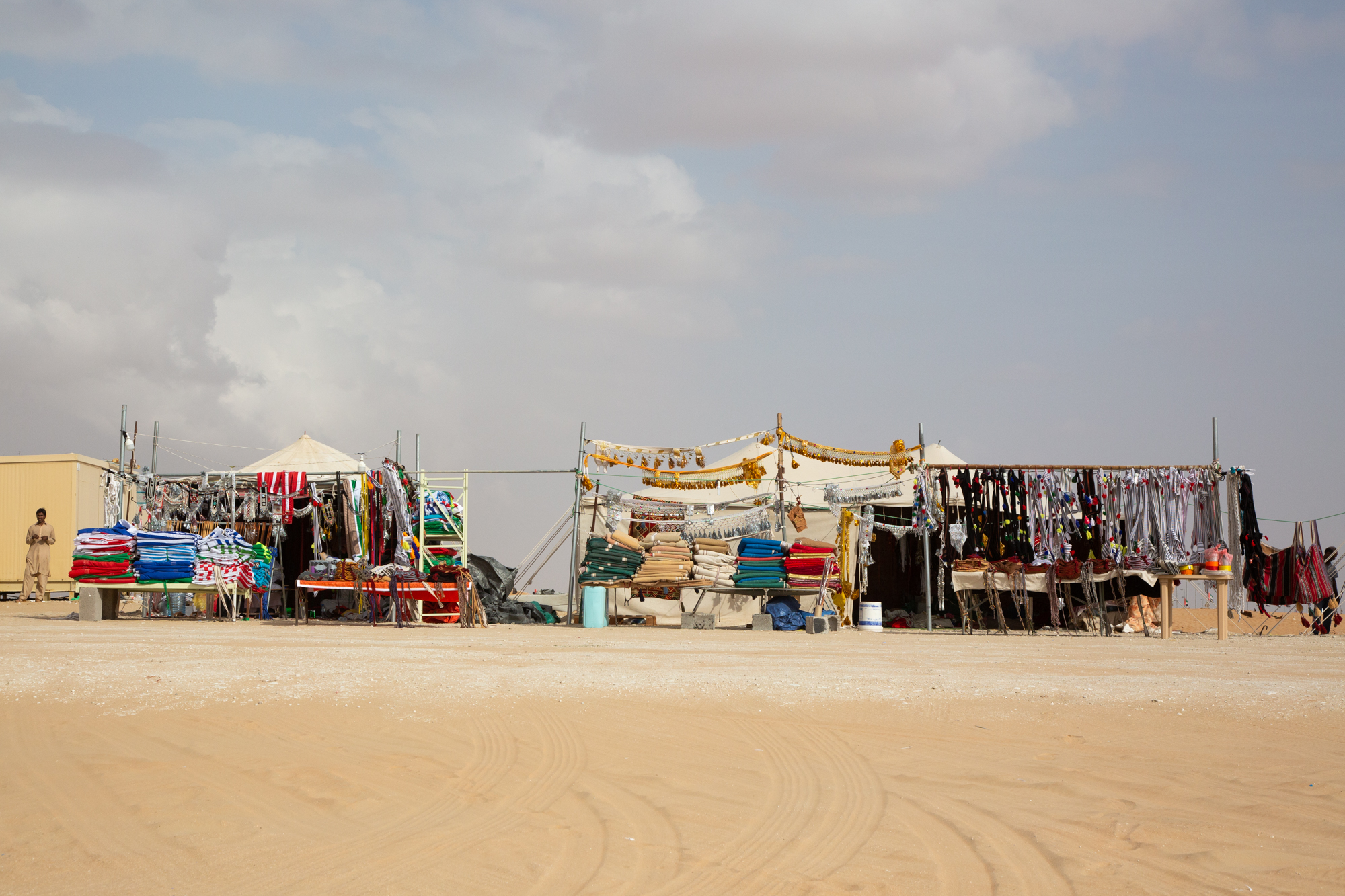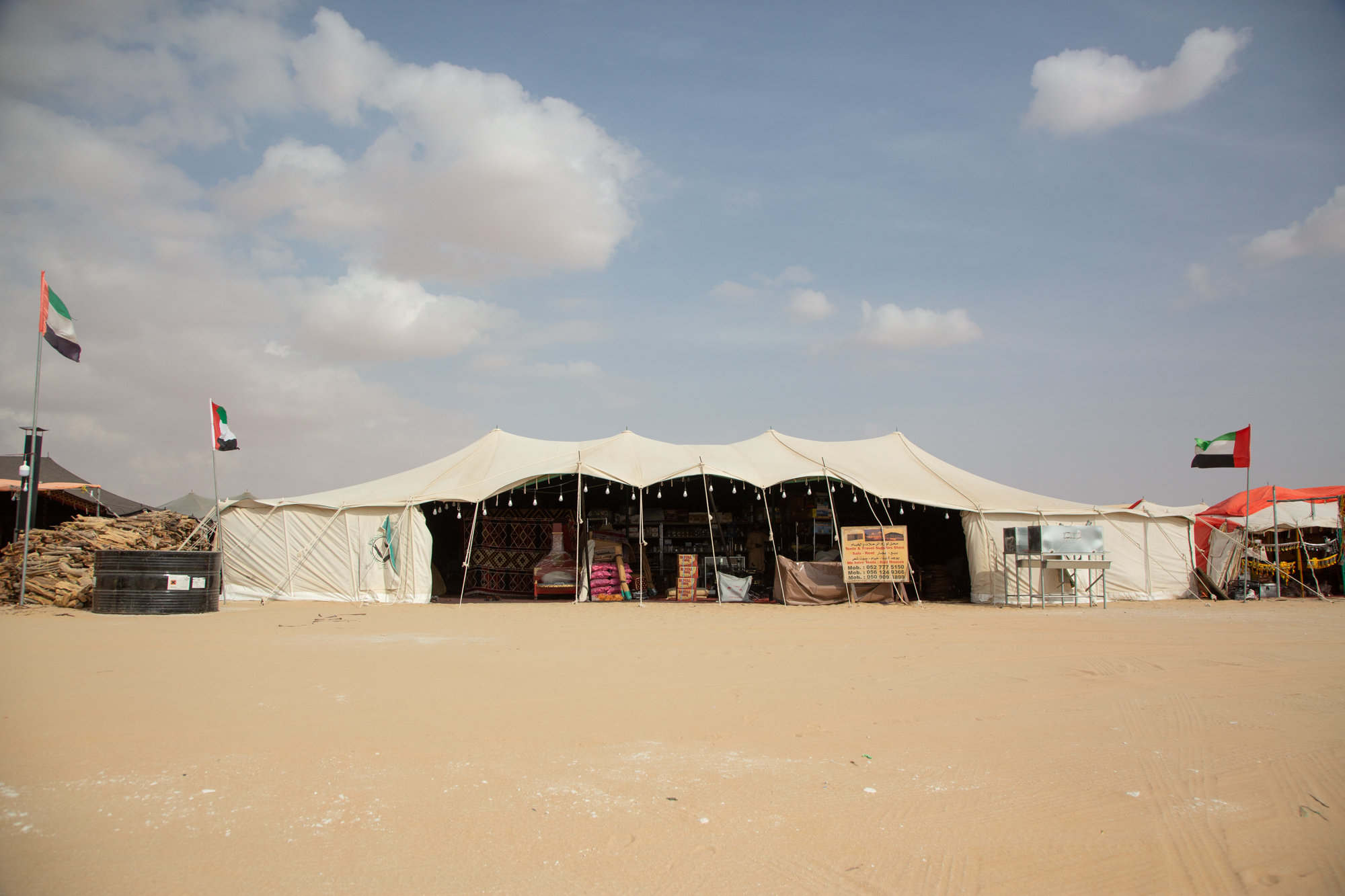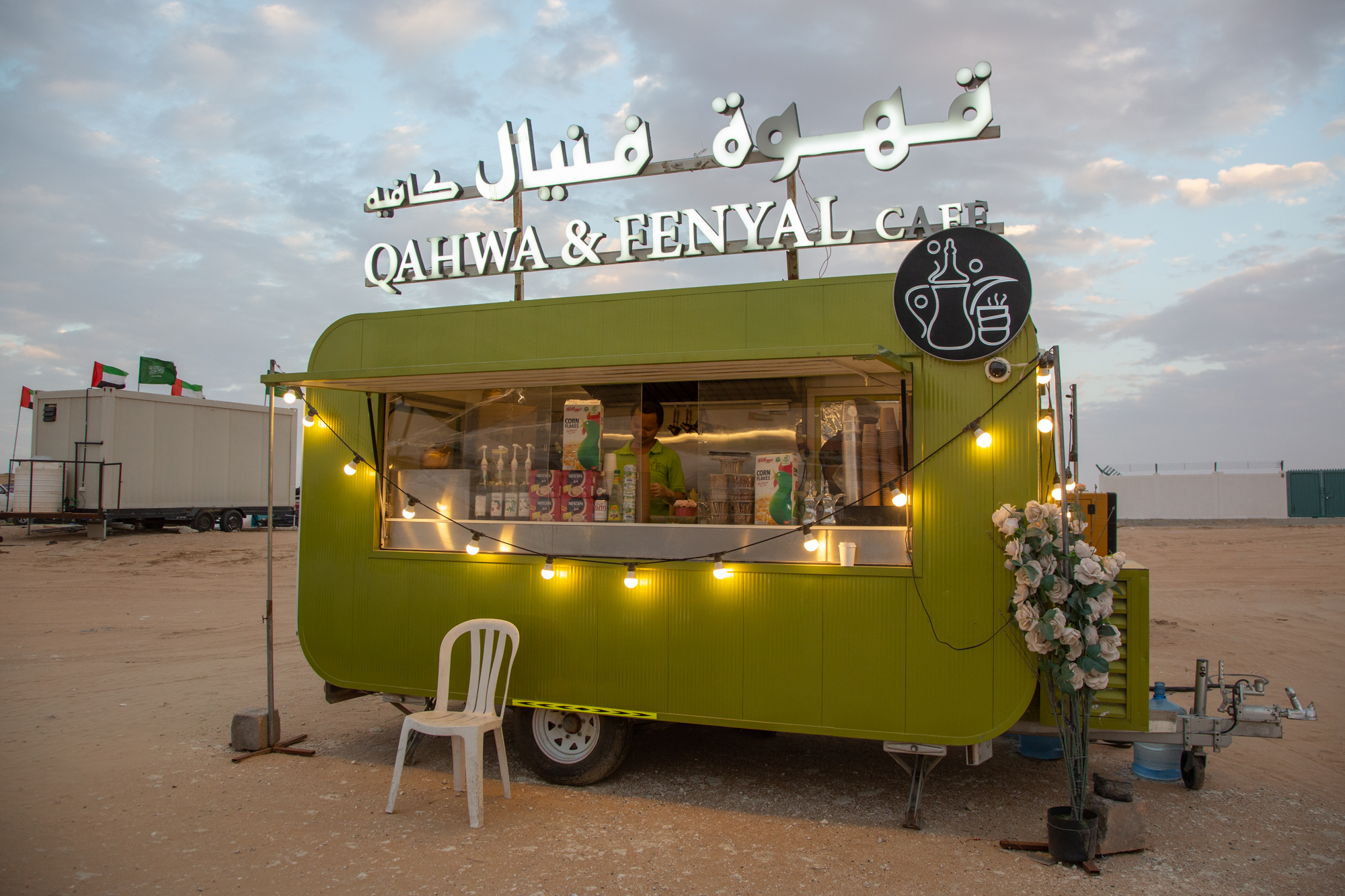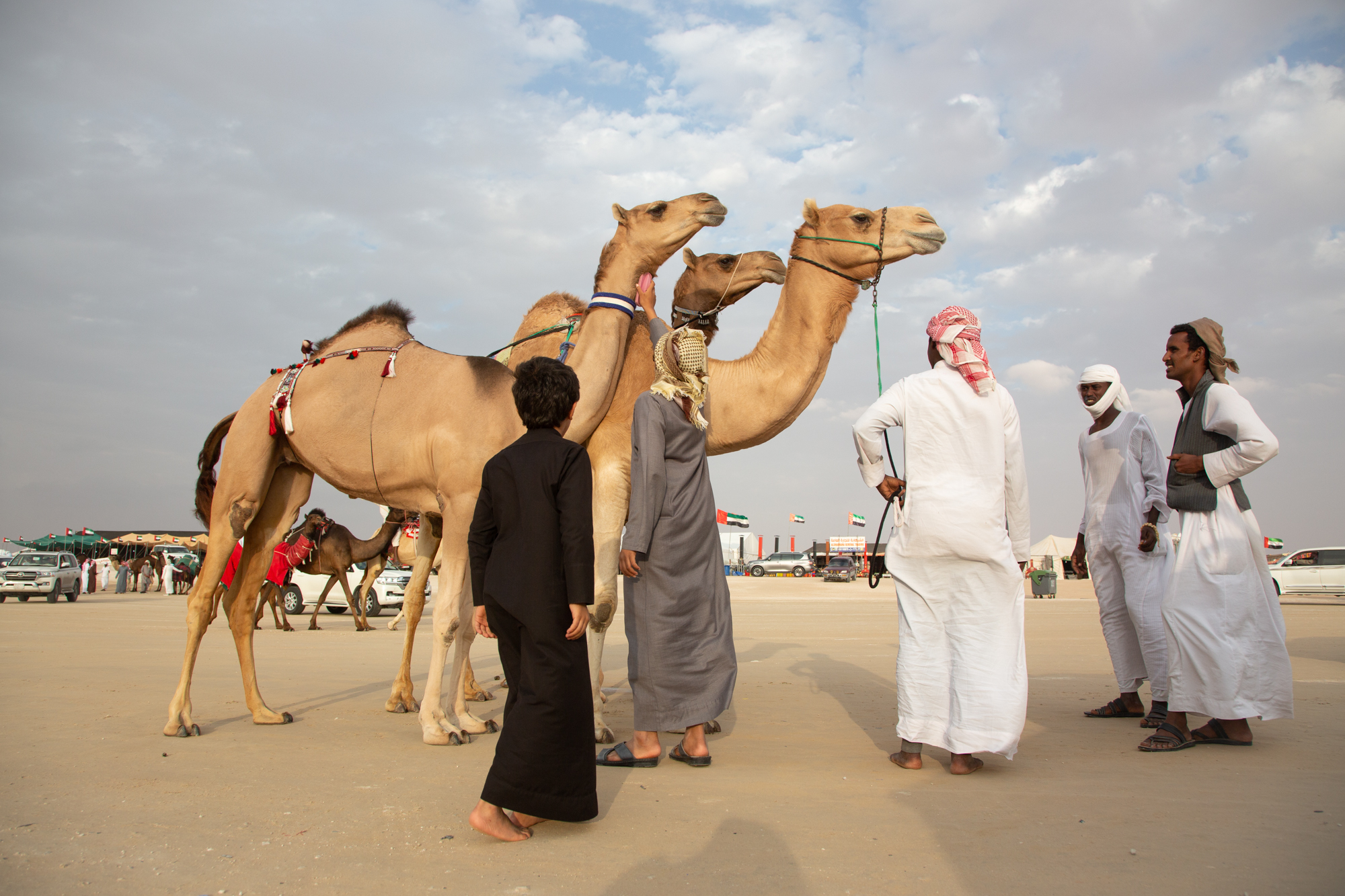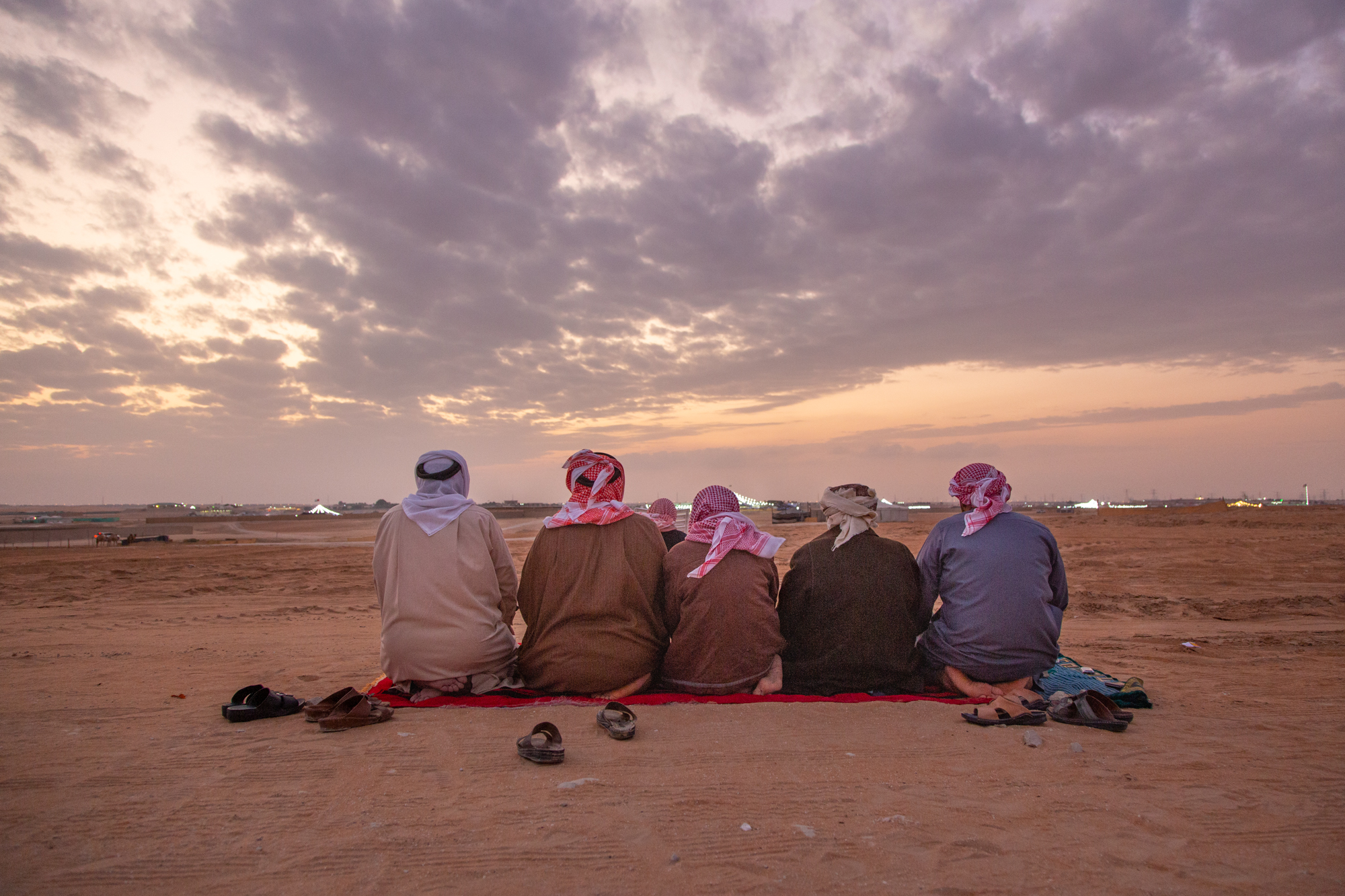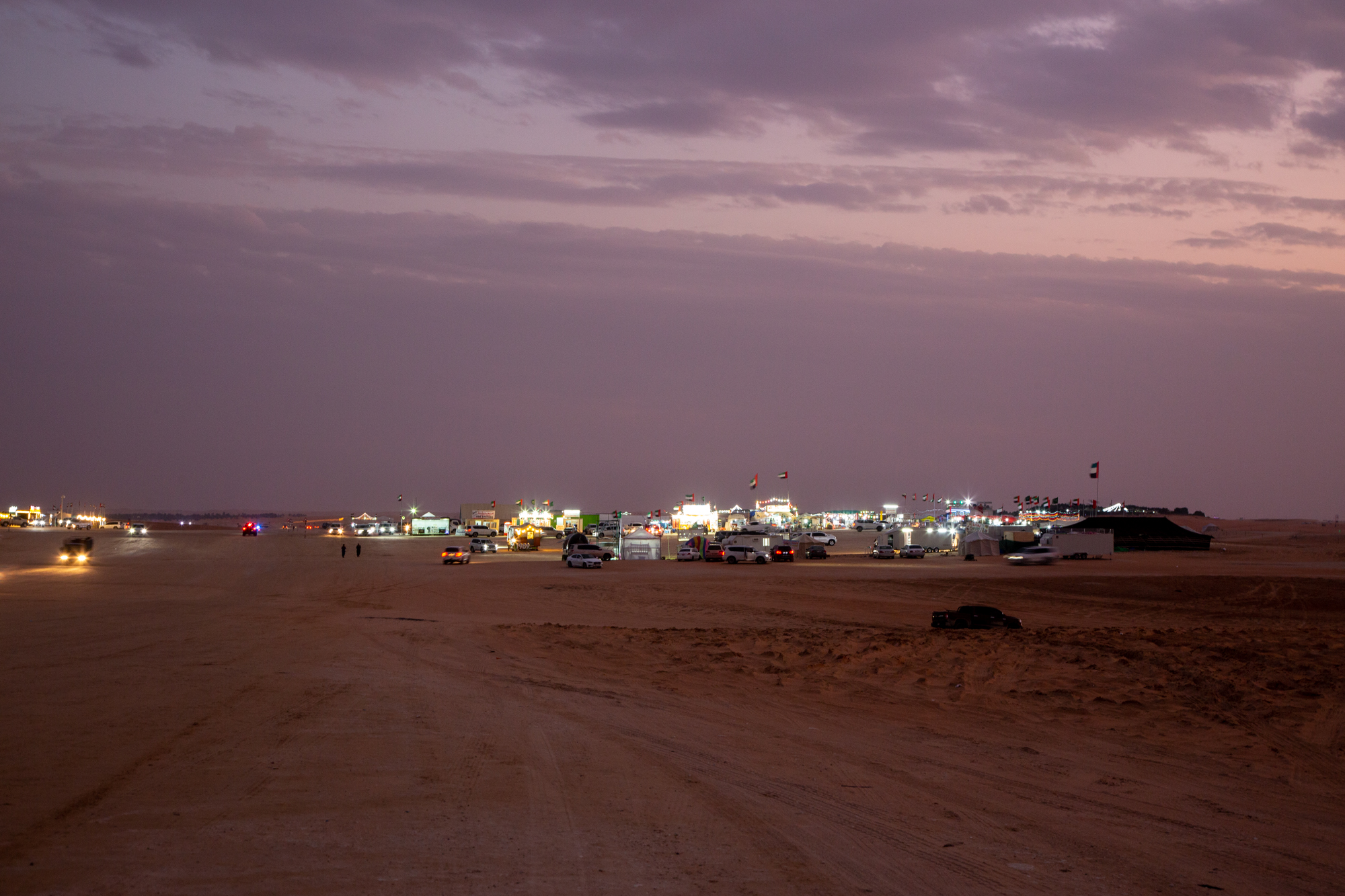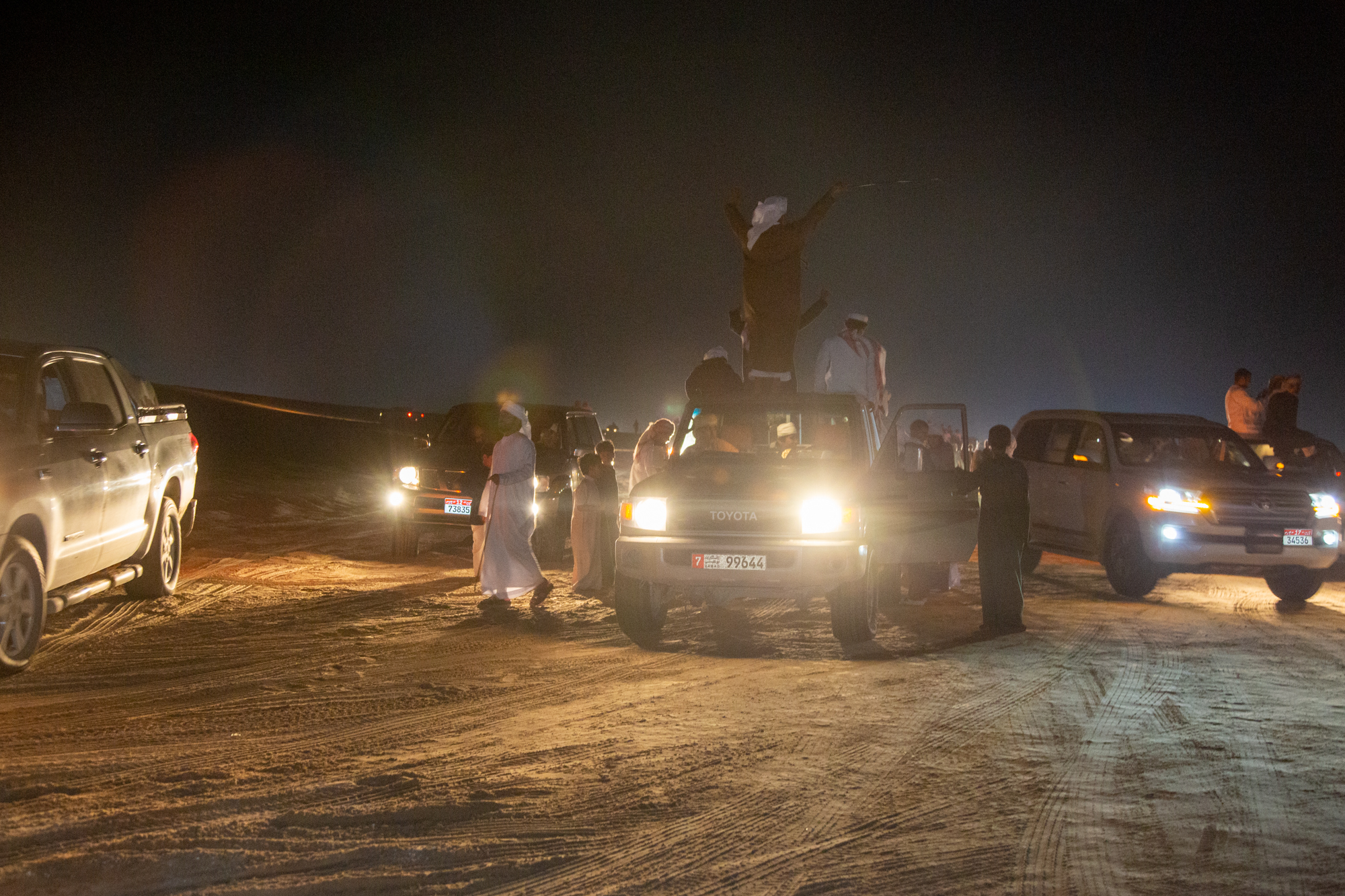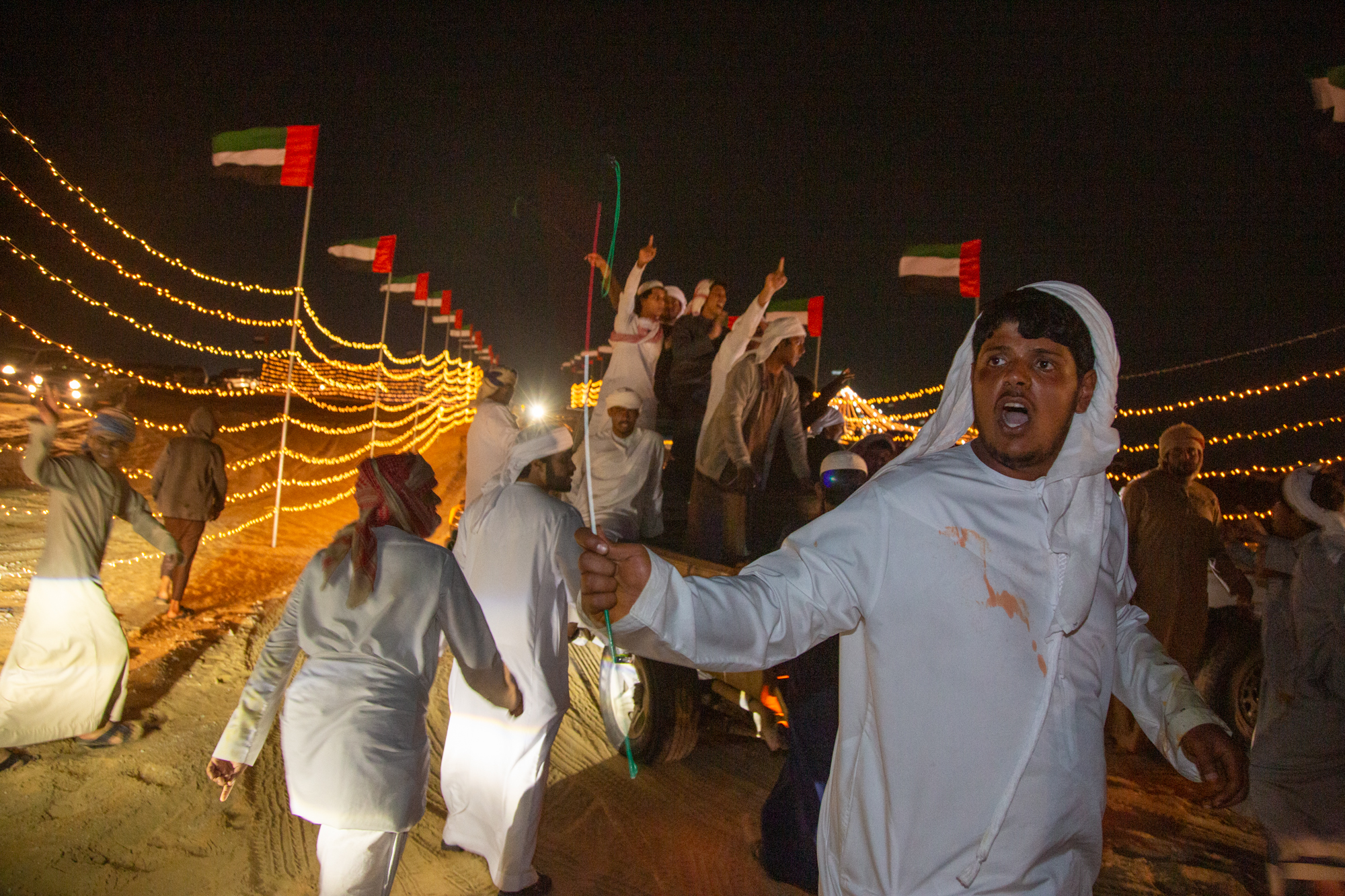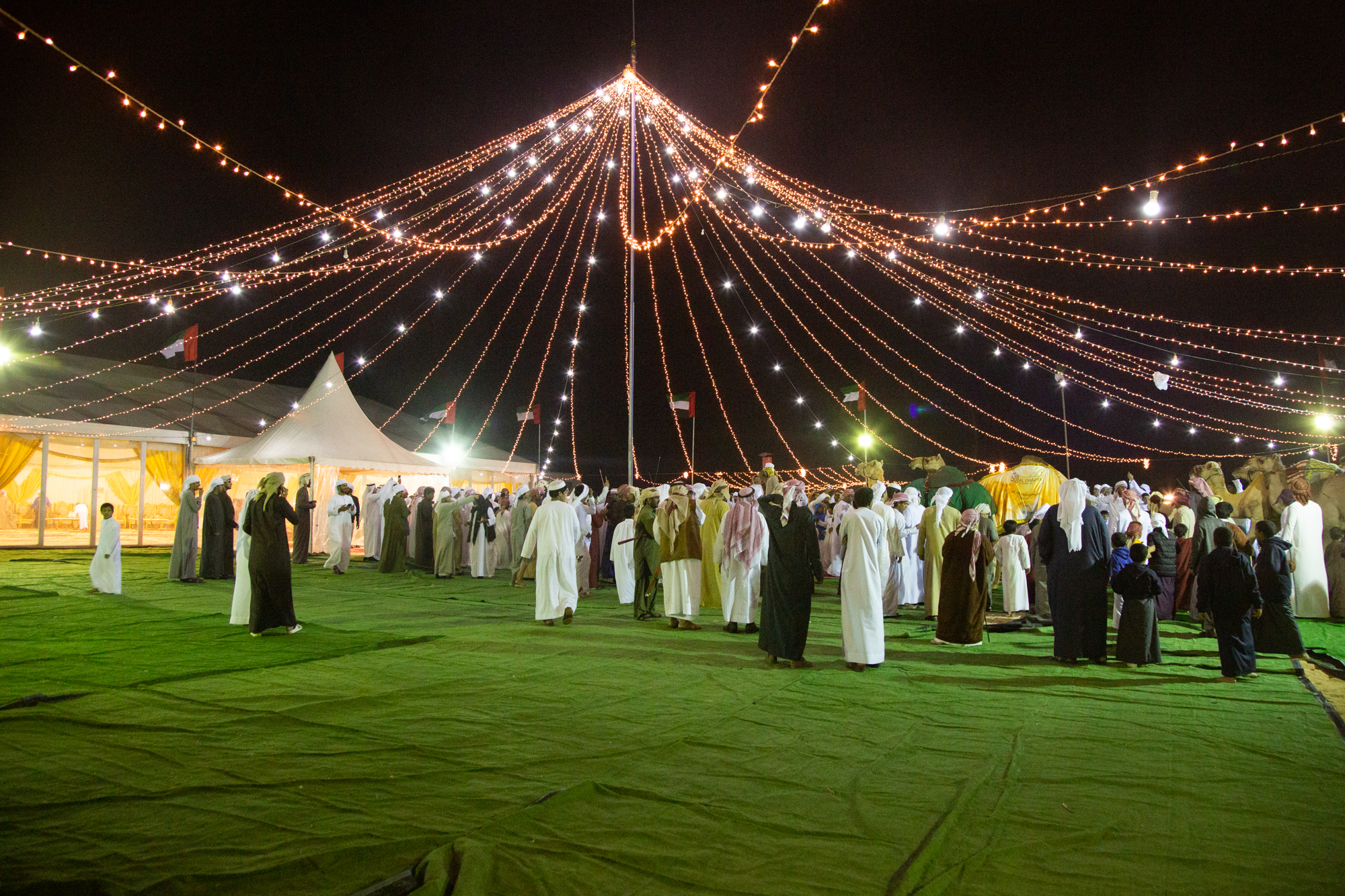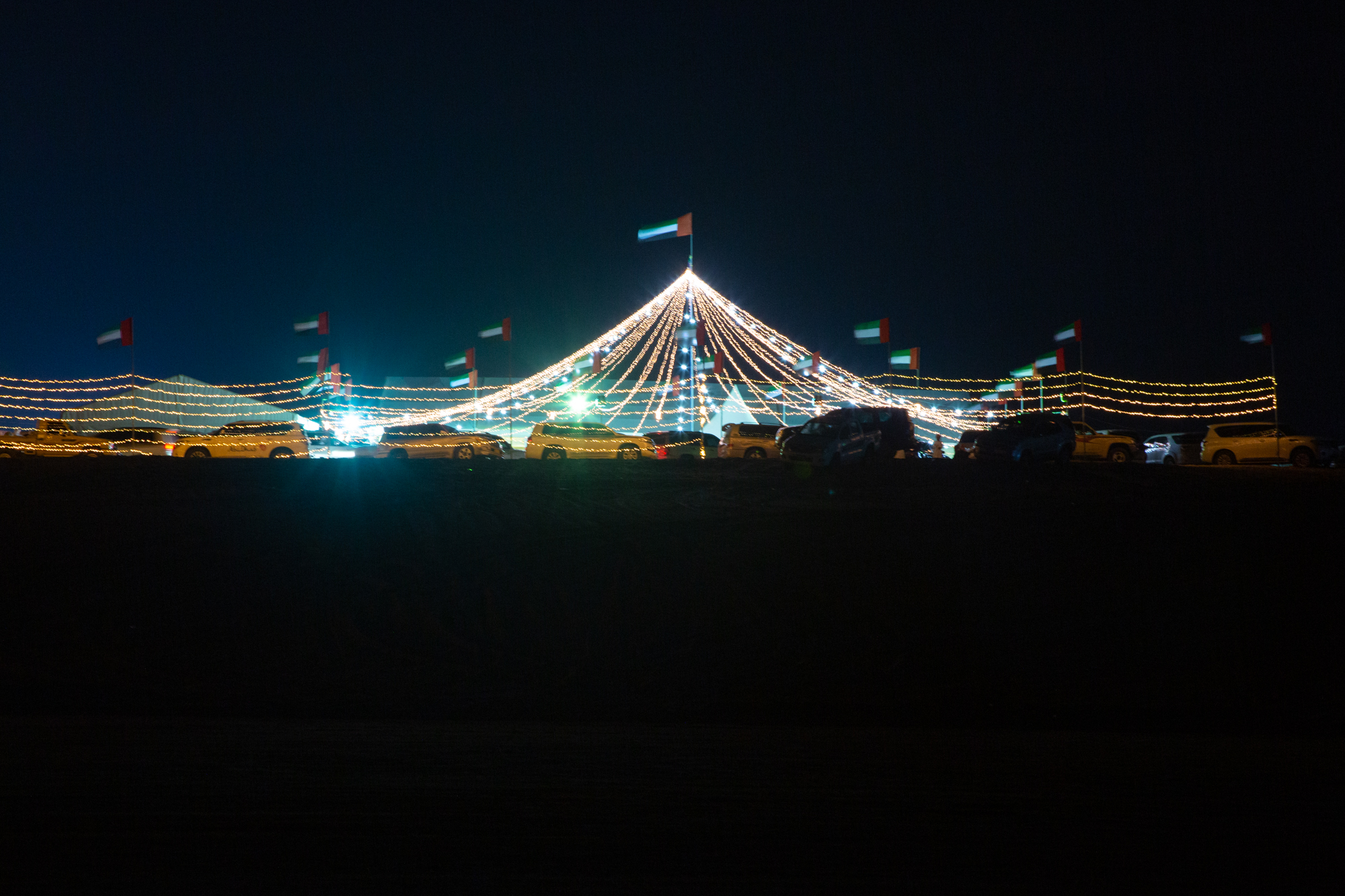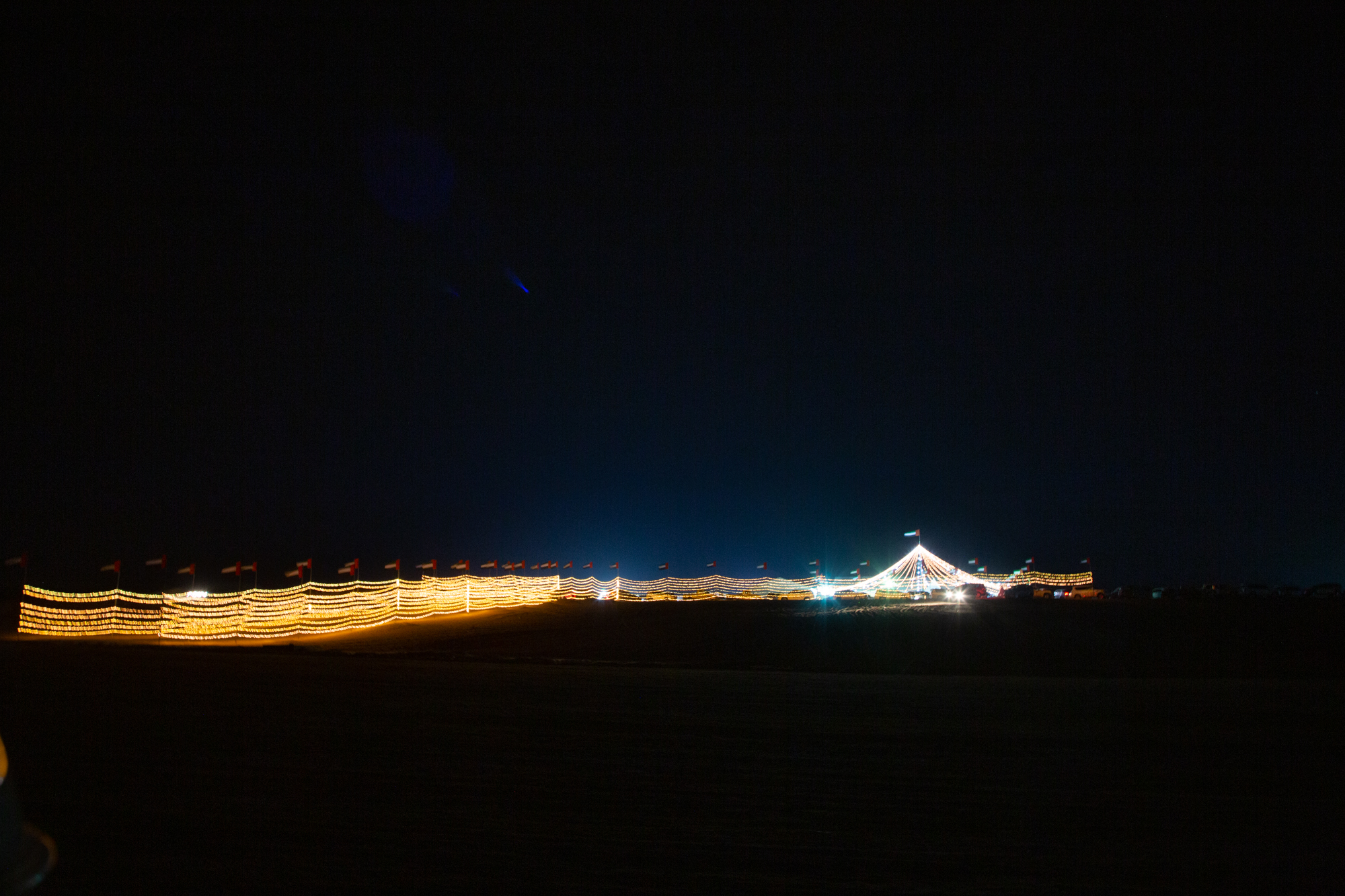IN THE PRESENCE OF ROYALTY – MEETING THE CAMEL BEAUTY QUEENS OF AL DHAFRA
“Camel number 1!!! Camel number 1!!!
A bunch of young boys in kanduras ran shouting towards my car pointing their index fingers in the air. In the distance appeared two men with four camels – one of them draped in a gold-tasselled winners’ blanket. The little group was surrounded by a swarm of clapping and jumping children and as they came closer, one of the men lifted his arms in a victorious gesture.
Behind, slowly driving across the sand dunes, followed a large convoy of beeping 4x4s. On the back of the trucks and leaning out of all the windows were men and boys waving and cheering – many of them filming the scene to share with their friends and family on social media.
Without a second thought I left my little rental car behind (I wouldn’t have gotten far in the deep sand anyway) and jumped onto the back of the nearest pickup truck full of kids waving their keffiyehs – the traditional Middle Eastern headgear. And so I travelled to my first winner’s celebration for a camel beauty queen.
For three weeks a year, the desert shines and Million Street becomes the centre of the camel universe.
170 kilometres southwest of Abu Dhabi, on the edge of the world’s largest sand desert, is Al Dhafra – a Mecca for camels and Bedouin lifestyle.
More than 24,000 camel beauty queens from all over the Middle East compete for AED 60m in prize money at camel beauty pageants and millions of Dirhams are paid as particularly beautiful camels change hands.
The contests originated from a family dispute when two camel breeders had to call on some independent judges to determine whose animals were more beautiful. That was in 1993. Since then, camel beauty contests evolved into a multi-million dollar industry with state-sponsored heritage festivals all across the country.
Competitions are divided into different categories according to breed, age, sex and whether a camel is owned by a sheikh or a tribesman.
But the criteria are the same, and so it seems that the ideal camel has long straight legs and a long neck, a shapely hump in the perfect place on the lower back, pert ears, expressive eyes framed by upward curled eyelashes, long, droopy lips and, of course, a sleek coat and elegant posture.
And no supermodel is complete without jewellery – that is no different in the camel world.
A whole industry has sprung up around the beauty pageants and the camel tailors have set up camp at Al Dhafra where they sell shiny camel blankets with tinsel tassels around the edges, colourful reins and even glittering necklaces made of plastic beads and stringed coins to perfectly accentuate a camel’s neck.
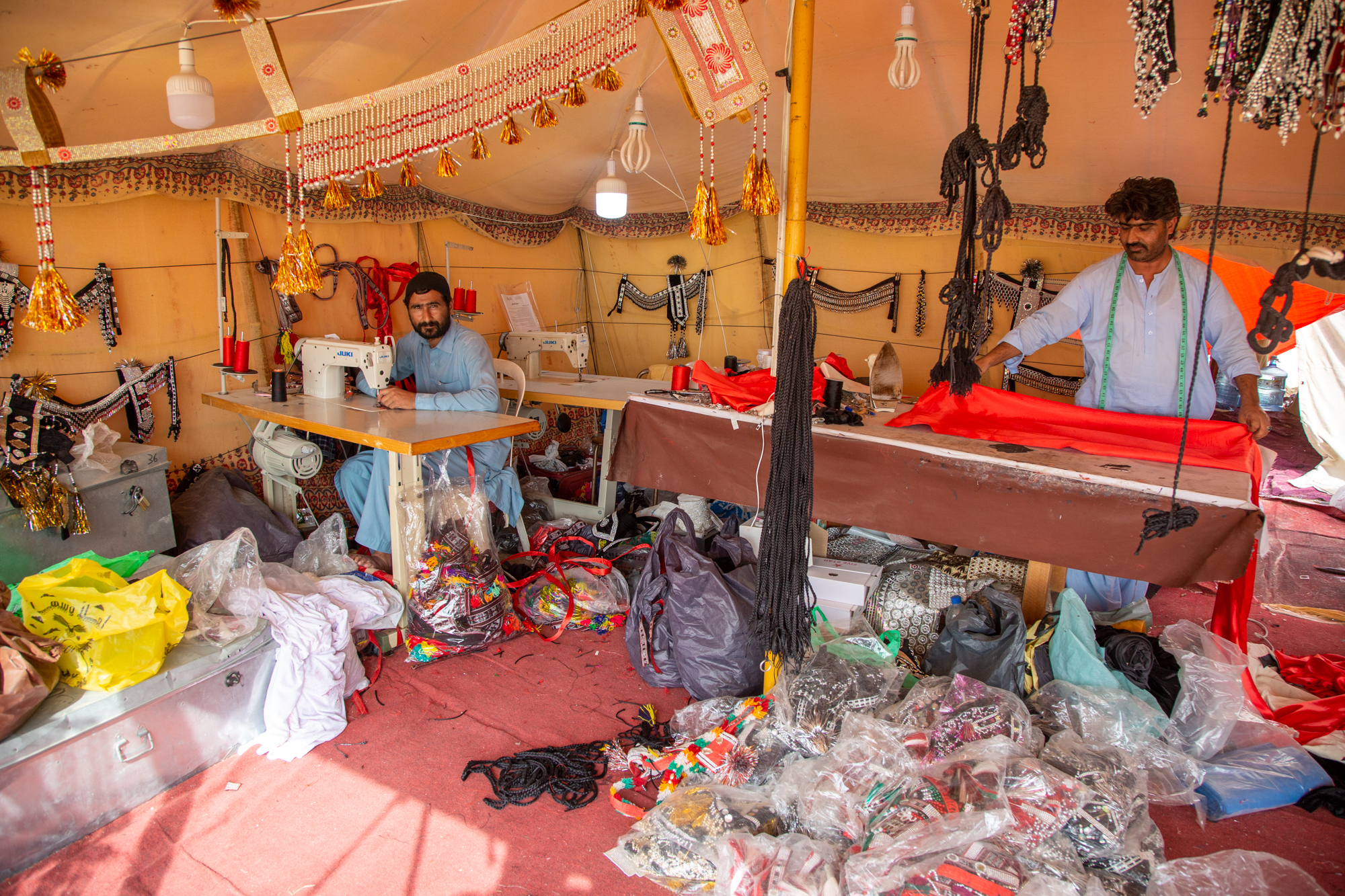
Each December, Million Street, the dirt road, where the camel superstars walk, transforms into an open-air market of tents, caravans and food trucks. Traders are flocking to Al Dhafra to sell everything that is required for a Bedouin lifestyle – or just a few weeks in the desert.
Not many decades ago, the ancestors of modern-day Emiratis would have lived as nomads – but when oil was discovered and wealth came to the region in the 1950s, they settled down. The old traditions, however, are held high in the community and most families still regularly set up desert camps.
And so, the market in Al Dhafra is not just the place to get camel tack and shampoo but colourful winter blankets, coffee pots with matching cups, stoves and rugs and hunting gear, foldable chairs, waterskins and clothes are also for sale. The festival brings wealth and a need for services to the region, which entrepreneurial businessmen are happy to fulfil.Bright lights advertise restaurants which serve kebabs, cakes and sweet karak chai, laundry services keep the clothes for humans and camels looking pristine while corner shops from nearby Madinat Zayed have set up little subsidiaries to supply daily necessities.
As the sun goes down and the sky turns a dusky purple, tent shaped canopies made of thousands of lights begin to sparkle between the dunes as far as the eyes can see. Members of the different Bedouin tribes, usually scattered all over the region, have come here to celebrate their traditions and successes – and each tribe has set up a lavishly decorated tent in which the men spend the evenings while the women get together to drink tea, shop, gossip and listen to entertainment at an enclosed market nearby.
I have been invited to celebrate another camel’s success and so I join the men of the Almuharrami family as we follow Waheela, the camel beauty queen into the illuminated tent. “She has just been crowned the most beautiful young camel in the Middle East”, beams Muneef, her twelve-year-old owner proudly as the music starts and the men lift their bamboo canes to dance the yowalah, the traditional dance of the UAE, until deep into the night.


